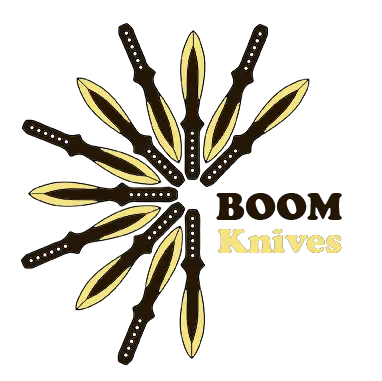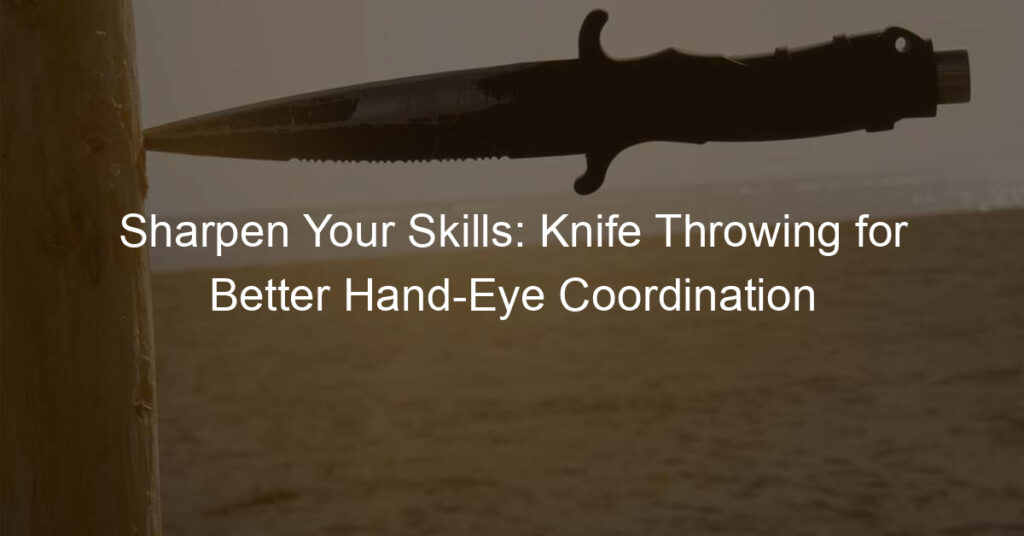Introduction to Knife Throwing Techniques
Knife throwing is a fascinating skill that has been practiced for centuries. It requires precision, control, and a deep understanding of the techniques involved. In this article, we will delve into the history and evolution of knife throwing, and explore the basic techniques that every aspiring knife thrower should know.
-
- History and Evolution of Knife Throwing
Knife throwing has a long and storied history that spans across different cultures and continents. The earliest evidence of this practice dates back to prehistoric times when our ancestors used thrown knives as hunting tools. As civilizations evolved, so did the art of knife throwing. It became a form of entertainment in the Middle Ages, a competitive sport in the 19th century, and a popular hobby today. For more detailed information, you can visit the Wikipedia page on knife throwing.
-
- Understanding the Basic Knife Throwing Techniques
There are several basic techniques in knife throwing that beginners should master. The first is the grip. A firm but relaxed grip is essential for control and accuracy. The second is the stance. A balanced and comfortable stance provides a stable base for your throw. The third is the throw itself. It involves a smooth and fluid motion, with the arm extending fully and the wrist snapping forward at the end. Lastly, the release. The timing of the release is crucial for the knife to hit the target accurately. These are the foundations of knife throwing, and with practice, you can improve and refine these skills.
Power in Knife Throwing
Building Strength for Knife Throwing
-
- Exercises to enhance arm and wrist strength
Arm and wrist strength are crucial for knife throwing. They help in maintaining a firm grip on the knife and in controlling the force of the throw. Some exercises that can help enhance arm and wrist strength include push-ups, pull-ups, and wrist curls. Regular exercise can significantly improve your strength over time.
-
- Importance of core strength in knife throwing
A strong core provides stability and balance, which are essential for a successful throw. It also helps in generating power for the throw. Exercises like planks, sit-ups, and yoga can help in building a strong core.
Building strength for knife throwing is not an overnight process. It requires dedication, consistency, and patience. But with regular exercise and practice, you can significantly improve your power in knife throwing.
Translating Power into Throws
-
- Techniques to effectively use power in throws
The first is to ensure you have a firm grip on the knife. This doesn’t mean squeezing it tightly, but holding it in a way that it won’t slip out of your hand. The second technique is to use your whole body when you throw, not just your arm. This means engaging your core and using your legs to help generate power. Follow through with your throw. This means continuing the motion even after the knife has left your hand, which can help increase the power and accuracy of your throw.
One is overexerting themselves, which can lead to inaccurate throws and even injury. Use your whole body and not just your arm. Another common mistake is not following through with the throw, which can reduce the power and accuracy of the throw. To avoid this, make sure to continue the motion even after the knife has left your hand. Lastly, many people hold the knife too tightly, which can also affect the accuracy of the throw. To avoid this, hold the knife firmly but not so tight that it affects your throw.
Control in Knife Throwing
Mastering Knife Control
-
- Understanding grip and release for better control
The grip and release technique is a fundamental part of knife throwing. The grip should be firm but not too tight, as this could affect the knife’s rotation and direction. The release should be smooth and at the right moment. The Wikipedia page on Knife Throwing provides more detailed information on grip and release techniques.
-
- Practicing control: exercises and drills
Start with simple exercises such as throwing the knife at a close target. As you get better, increase the distance and try to hit smaller targets. Drills such as the ‘clock drill’, where you aim at different points on an imaginary clock, can help improve your control.
Balancing Knife Throwing
Importance of Balance in Knife Throwing
-
- How balance affects the accuracy of throws
This predictability allows the thrower to aim accurately and consistently. A balanced knife spins evenly in the air, ensuring it hits the target with the intended force and precision. An unbalanced knife, on the other hand, can wobble or veer off course, making it difficult to hit the target accurately.
-
- Choosing the right knife for balanced throwing
A knife that is too heavy or too light can be difficult to control and may not follow the intended path when thrown. The best knife for throwing is one that feels comfortable in your hand and has a balance point near the center of the knife. This ensures that the knife spins evenly when thrown and increases your chances of hitting the target accurately.
In conclusion, balance in knife throwing is not just about the thrower’s physical balance, but also about the balance of the knife itself. By understanding how balance affects your throws and choosing the right knife, you can greatly improve your knife throwing skills.
Precision in Knife Throwing
Achieving Precision in Throws
-
- Techniques for improving aim and precision
Ensure you have a firm grip on the knife. Your fingers should be wrapped around the handle, with the thumb on one side and the other four fingers on the other. This grip provides stability and control.
Next, focus on your stance. Stand with your feet shoulder-width apart and your body facing the target. When you throw the knife, use your entire body, not just your arm. This helps to generate the necessary power and control for a precise throw.
Finally, always keep your eye on the target. This might seem obvious, but it’s easy to get distracted or lose focus. Concentrating on the target can significantly improve your precision.
-
- Role of practice in achieving precision
The more you practice, the better you’ll get. Start by practicing with a stationary target and gradually move to moving targets as you improve. It’s not about how many knives you can throw, but how accurately you can throw them.
Set aside time each day for practice and be patient with yourself. It might take time, but with consistent practice, you’ll see improvements in your precision.
Advanced Knife Throwing Skills
Mastering Different Throwing Styles
- Exploring different knife throwing styles: Here are a few popular styles you might want to explore:
- Spin throwing: This is the most common style, where the knife spins in the air before hitting the target. It requires precise timing and distance calculation.
- No-spin throwing: In this style, the knife doesn’t spin in the air, making it more challenging but also more accurate.
- Half-spin throwing: This is a hybrid style where the knife makes a half rotation before hitting the target. It’s a good style for beginners to transition into advanced throwing.
- Choosing the right style for you: The best style for you depends on your personal preference and the type of knife you’re using. Here are a few things to consider:
- Your comfort: Choose a style that feels comfortable and natural to you. This will make your throwing more consistent and accurate.
- Your knife: Different knives are better suited to different throwing styles. For example, heavier knives are often better for spin throwing, while lighter knives are usually better for no-spin throwing.
- Your goal: If you’re throwing for sport, you might want to master a variety of styles. But if you’re throwing for self-defense, you might prefer a style like no-spin throwing that prioritizes accuracy over style.
Knife Throwing Training
Creating a Training Routine
- Designing a Training Schedule for Consistent Improvement
A good schedule should include specific goals, varied exercises, and regular assessments of your progress. For example, you might start with basic throwing techniques, gradually introducing more advanced skills as you improve Aim to practice a little every day, rather than a lot in one go.
- Importance of Rest and Recovery in Training
Your muscles need time to recover and adapt to the new demands you’re placing on them. Overtraining can lead to fatigue, injury, and burnout, all of which can hinder your progress. So, make sure to include rest days in your training schedule. During these days, you can engage in light activities, such as stretching or walking, to promote recovery. Also, ensure you’re getting enough sleep and maintaining a balanced diet to support your body’s recovery processes.
Knife Throwing Tips
Tips from the Pros
- Valuable advice from professional knife throwers
-
- Practice makes perfect: The more you practice, the better you’ll get. Make sure to practice regularly and consistently.
- Focus on your grip: A good grip is crucial for a successful throw. Make sure your grip is firm but not too tight, and your fingers are positioned correctly on the handle.
- Control your throw: It’s not about how hard you throw, but how well you control the knife. Focus on your aim and the smoothness of your throw.
-
- Common pitfalls and how to avoid them
-
- Throwing too hard: Many beginners think that throwing harder will make the knife stick better. However, this often leads to a loss of control. Focus on your technique, not your strength.
- Not practicing enough: Like any skill, knife throwing requires regular practice. Make sure to set aside time each week to practice and improve.
- Using the wrong equipment: Not all knives are suitable for throwing. Make sure to use a knife designed for this purpose, and always handle it with care.
Knife Throwing Mastery
Path to Mastery
-
- Understanding the journey to knife throwing mastery
The journey to knife throwing mastery is a step-by-step process. It starts with learning the basics, such as understanding the different types of knives and their uses, learning how to grip and throw the knife, and practicing control and precision. As you progress, you will need to learn more advanced techniques, such as throwing multiple knives at once or hitting moving targets. This journey requires patience, dedication, and a lot of practice.
-
- Case studies of successful knife throwers
Joe “Brokenfeather” Darrah is a renowned knife thrower who has won numerous national and international competitions. He started his journey in knife throwing at a young age and has dedicated his life to mastering this art. He is known for his unique throwing style and his ability to hit targets with incredible accuracy. You can read more about him on his Wikipedia page.
Adam Celadin, a five-time World Champion in knife throwing, is another example of a successful knife thrower. He is known for his precision and control, and his ability to throw knives at various distances and hit the target every time. Learn more about his journey on his Wikipedia page.
Conclusion
-
- Recap of key takeaways:
Throughout this guide, we’ve covered a wide range of topics, starting from the basic introduction to knife throwing techniques, to the power, control, and balance needed in knife throwing. We’ve also delved into the importance of precision, advanced skills, training, and tips to master this art. The more you practice, the better you’ll get at controlling your power, balancing the knife, and hitting your target with precision.
-
- Next steps in your knife throwing journey:
Now that you’ve gained a solid understanding of the fundamentals of knife throwing, it’s time to put what you’ve learned into practice. Start with mastering the basic techniques, then gradually move on to more advanced skills. Don’t rush the process; take your time to understand and perfect each technique. Consider joining a local knife throwing club or online community where you can share experiences and learn from others. And most importantly, always prioritize safety.






